Shows its hand a bit too early
Type: Singleplayer
Genre: RPG, Strategy
Developer: Elder Games
Publisher: Headup
Release date: 26 Feb, 2021


The success of Slay the Spire has had quite the impact on the indie and mid-budget scene. Slay the Spire was by no means the first game to use a deck of cards that you’re able to build up over the course of a game, but it did seem to make cards in vogue.
But Cardaclysm is not like Slay the Spire. It probably owes a some of its existence to the popularity of StS, but it’s closer to a far older game: Etherlords. In Cardaclysm you’re, much like in Etherlords, trying to build an efficient deck of cards with creatures and spells, in an attempt to take down the opponents. The game is procedurally generated though not a roguelite. Death is not permanent in Cardaclysm.
Story & Setting
Deckbuilding games rarely put their stories front and center, and Cardaclysm is not an exception here, the story is pretty barebones. You’re a magician who dabbled in the dark arts, and accidentally unleashed the four horsemen of the apocalypse upon the world. And now you’re the one that needs to put things right by stopping them.
There’s a few hints at a greater world in the game. Many creatures have names and looks that make them seem like they thematically belong together and the four horsemen themselves have a bit of personality in their looks and how they move, but what’s here is barebones and there’s not really a plot here that gets advanced over the course of the game either. You’ll defeat one horseman and then the next gets introduced.
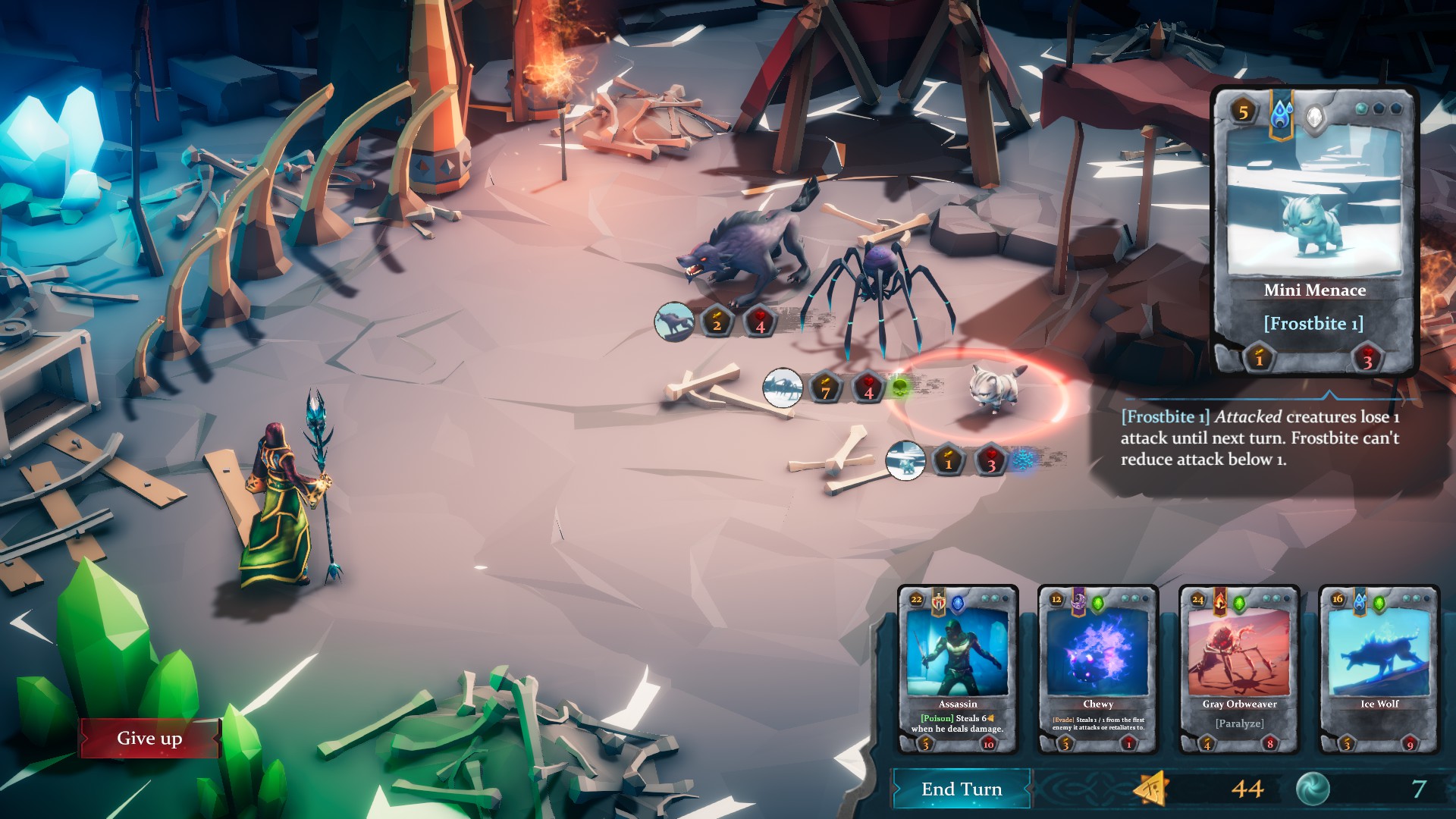
Presentation
Where the plot was lacking, the presentation in Cardcaclysm is pretty good. The art style is consistent and looks really nice. Despite a good amount of variety between creatures and areas you get to visit everything still looks coherent, like it belongs in the same world. The creatures themselves are for the most part things we’ve seen before, like dragons, wolves, elementals and such, but they have a nice stylized look to them and despite there being a lot of variants on the same theme, like different kinds of wolves, the different creatures still manages to look distinct. As do the different environments. There are a couple of different ones which have their own themes, and they still look like they belong together.
Each level is made up of a bunch of pieces that are randomly put together, as is often the case with procedurally generated games. Rogue legacy, Daggerfall, Dungeons of Dredmor and a lot of other games uses this technique. The problem here is that there’s not a whole lot of them, so you’ll quickly see them start repeating, and many of them are distinct enough that it becomes noticeable. Each piece also needs to have several points where it can connect to other pieces, and not all of those connector are used at any given time, so there’s a lot of stairs to nowhere littering the levels.
The music is pleasant and feels like it could fit in well with the music from the Heroes of Might and Magic series. That is high praise considering the Heroes of Might and Magic series has really good music. The sound effects are equally good. They feel nice and punchy without going overboard. This is particularly true for many of the offensive spells which feel really satisfying to use due to their accompanying sound effects.
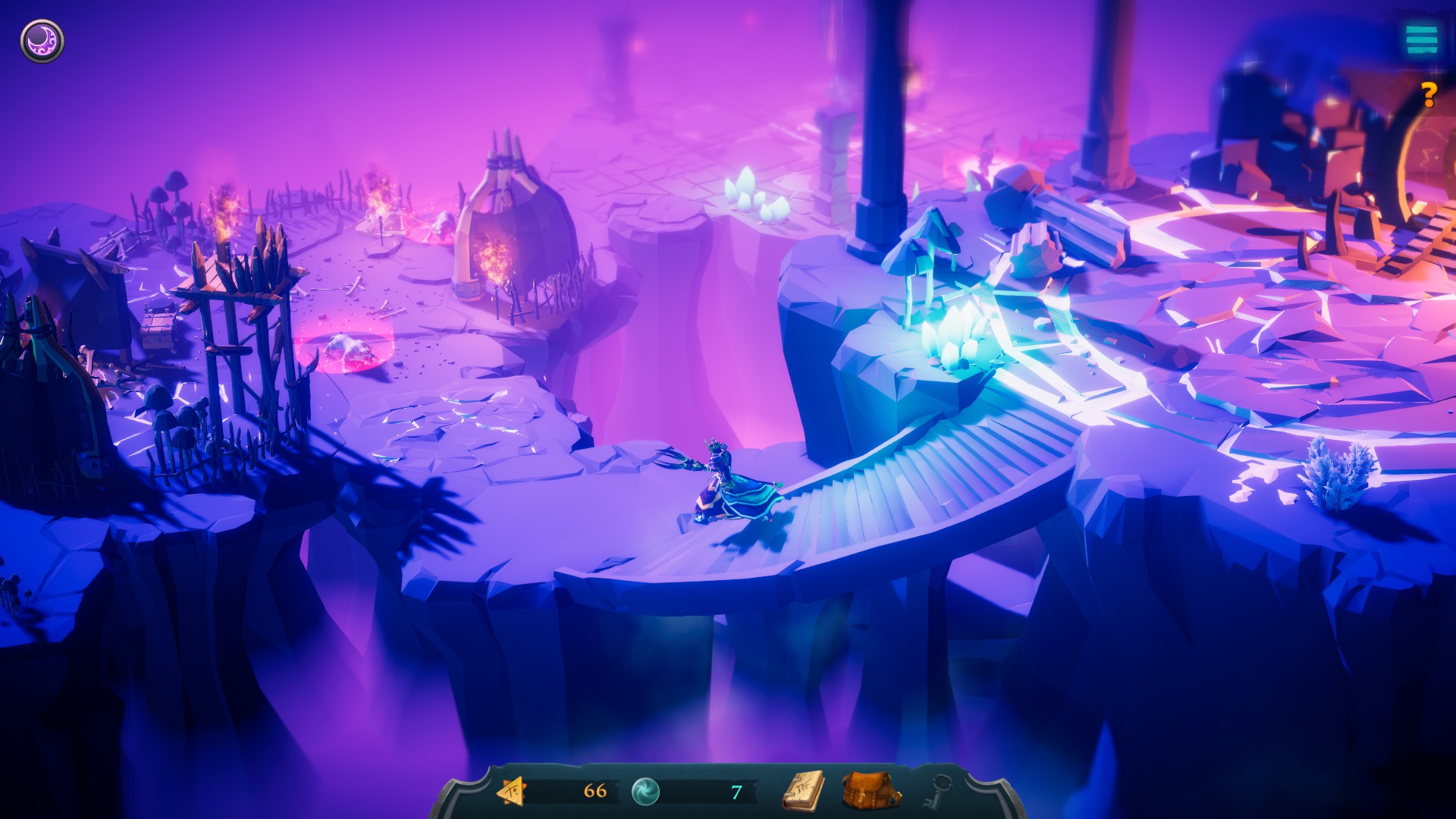
Gameplay
In Cardaclysm you’re trying to build up a deck that’s good enough to defeat the four horsemen of the apocalypse. As in other deck building games you’ll get more and more cards as you play that opens up new combos.
Decks in Cardcaclysm are small. made up of 14 cards in total, as long as you’re not having any equipment that increases this count. As anyone who’s played any form of deck building card game will tell you, a small deck is a consistent deck, and that’s very much the case here. it’s easy to build consistent combos in Cardaclysm.
The brunt of the game is taken up by the card battles. These see you face off against a bunch of enemy creatures and your goal is to kill them before they kill you. The enemy does not play any cards, instead they just start with a bunch of creatures in play. You always get the first turn and get to play as many cards as you want out of the 4 you start with. The only limitations are your two resources, golden runes and soul orbs. These reset after each battle, so you don’t need to worry about saving them for future fights, but during a battle you only have a limited amount of them, and once you run out you can’t play any more cards. Battles are usually pretty short though, rarely taking more than 3 turns.
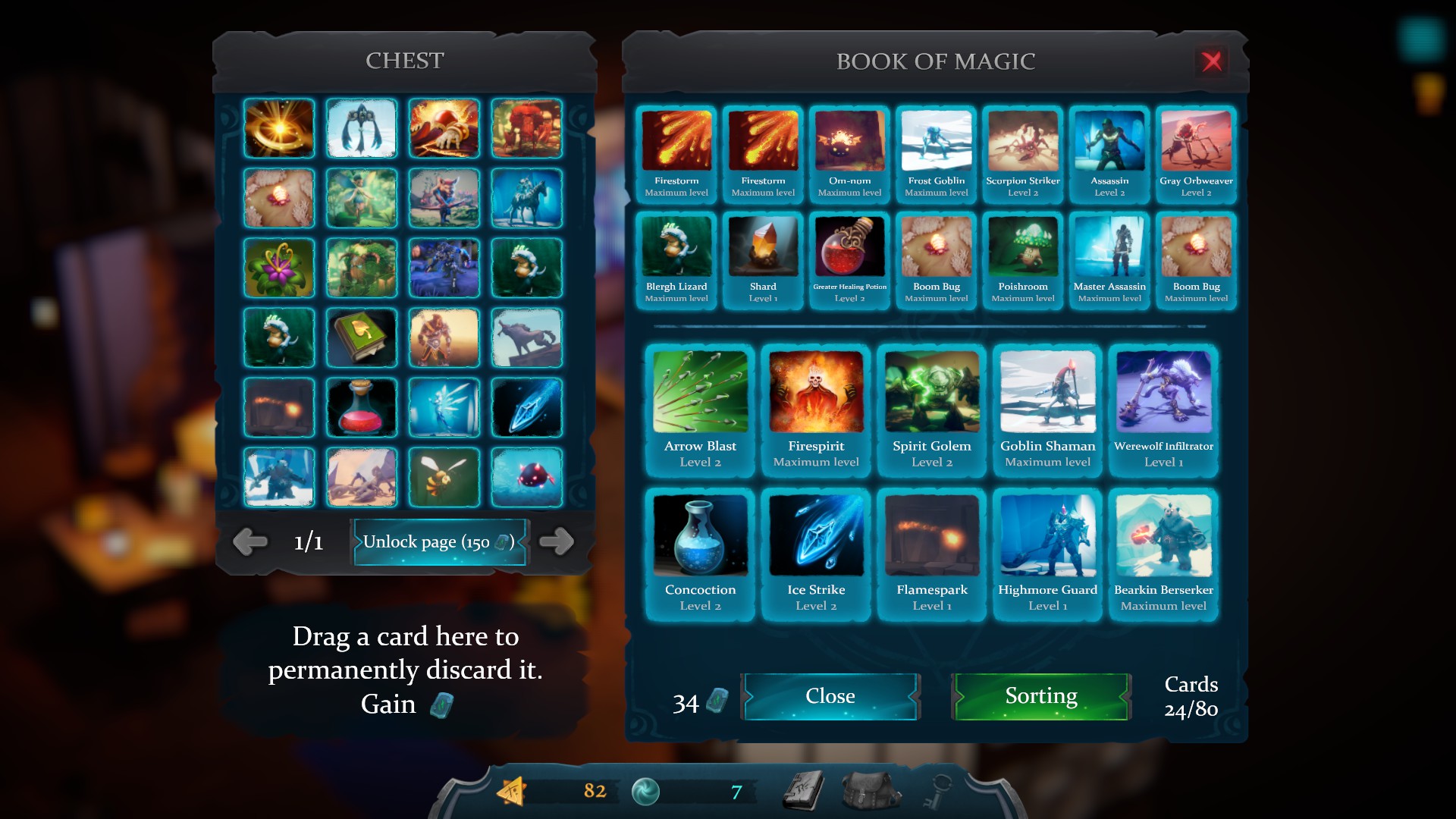
Every creatures has health and attack power. When it attacks it deals its attack power as damage which is subtracted from the enemy’s health. Simple enough. But most creatures also have some kind of special ability, and these can vary a lot between creatures. One might steal some enemy stats and add it to its own when it attacks, another might summon a second creature if it dies, and yet another might be able to paralyze an enemy and prevent it from attacking. Some even give you a few golden runes when attacking. Each creature also has a type, or allegiance associated with it, and there are a handful of these. The allegiance don’t mean anything on their own, but there are cards and effects that can interact with these. Like a creature might deal double damage to fire-allegiance creatures.
Creatures costs both soul orbs and golden runes. The more powerful the creature, the more it will cost. Spells just costs golden runes. The amount of soul orbs and golden runes you have will go up over the course of the game, as you’ll find both scattered around the world. Soul orbs are considerably more rare than golden runes though, to the point where it can take several hours of playtime before you find even a single one. Finding more resources like this does have the advantage of making you feel noticeably stronger over time, pretty much like a leveling system would in an RPG, but it also does limit what cards are useful at any given moment in the game. A single creature costing 100 golden runes won’t do you much good if you only have 80 of them, and once you’ve got 150 golden runes a really cheap creature won’t be all that useful anymore.
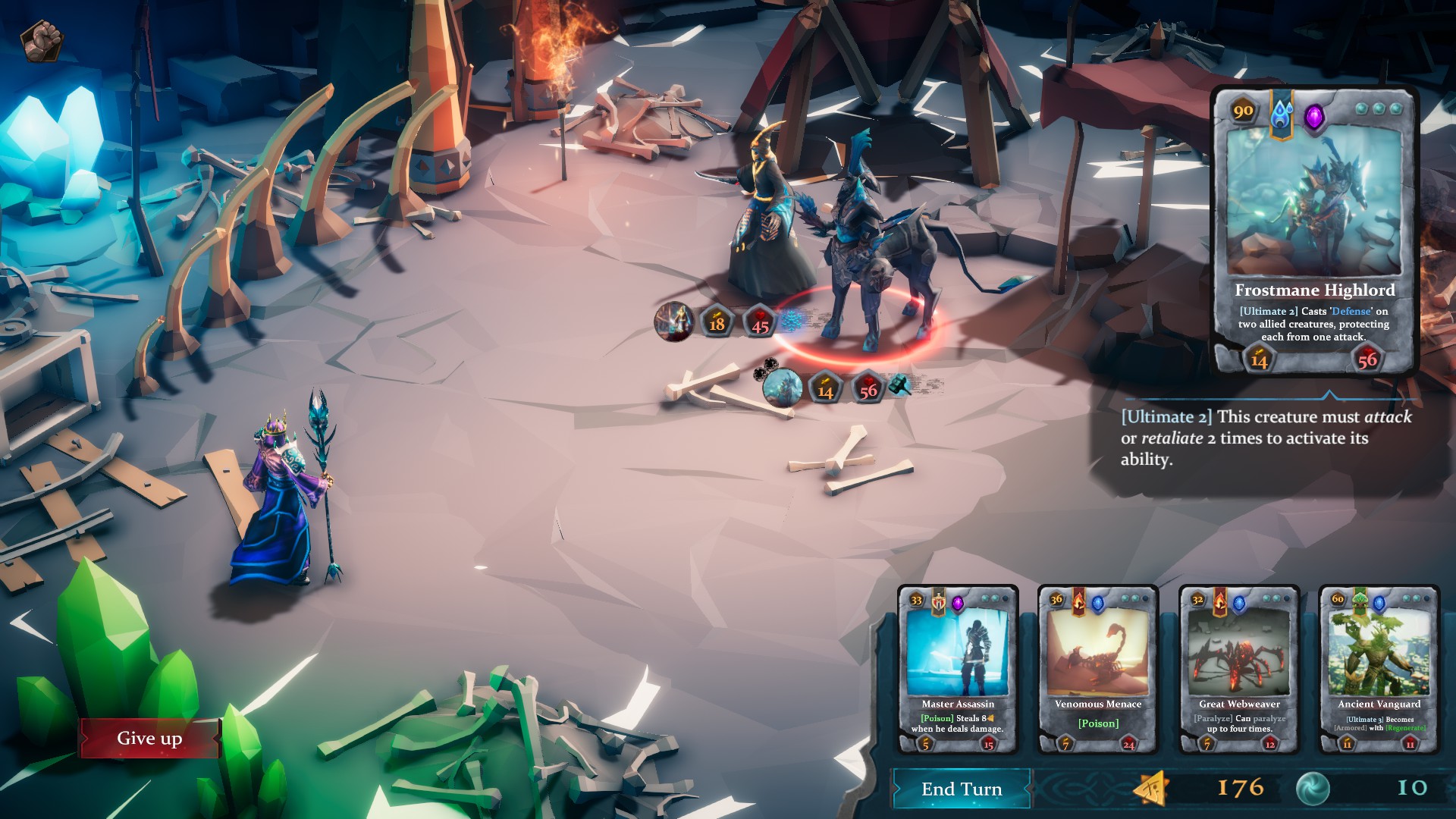
After every battle you’ll be given a random card. The cards you can get changes over time and you’re unlikely to get something that’s too hard to use early on, but later cards tend to be both more expensive in terms of resource costs and have more complex abilities. Low levels cards can also be combined to make a higher level variant, combine two wolves and you get a stronger wolf or two weak fireballs to get a more powerful one. The stronger variants that you get from combining cards are more expensive, so combining cards is not always the right choice though, and you can’t just keep combining cards to get even more powerful ones, there’s a cap for every card type. And if you don’t want a card in question you can sacrifice it in order to get some currency that you then can use to buy other cards.
There’s also artifacts scattered around the world. These are equipped items that take up specific slots on your character and will give you some kind of bonus. The bonuses are often something that enhances a specific creature type, like all fire creatures get +1 strength and +1 health, but they can also give you more cards in your deck or be more generalized buffs. These buffs can be substantial though and having the right artifact can improve a specific type of deck significantly, to the point where finding the right artifacts can make it worth completely altering your deck.
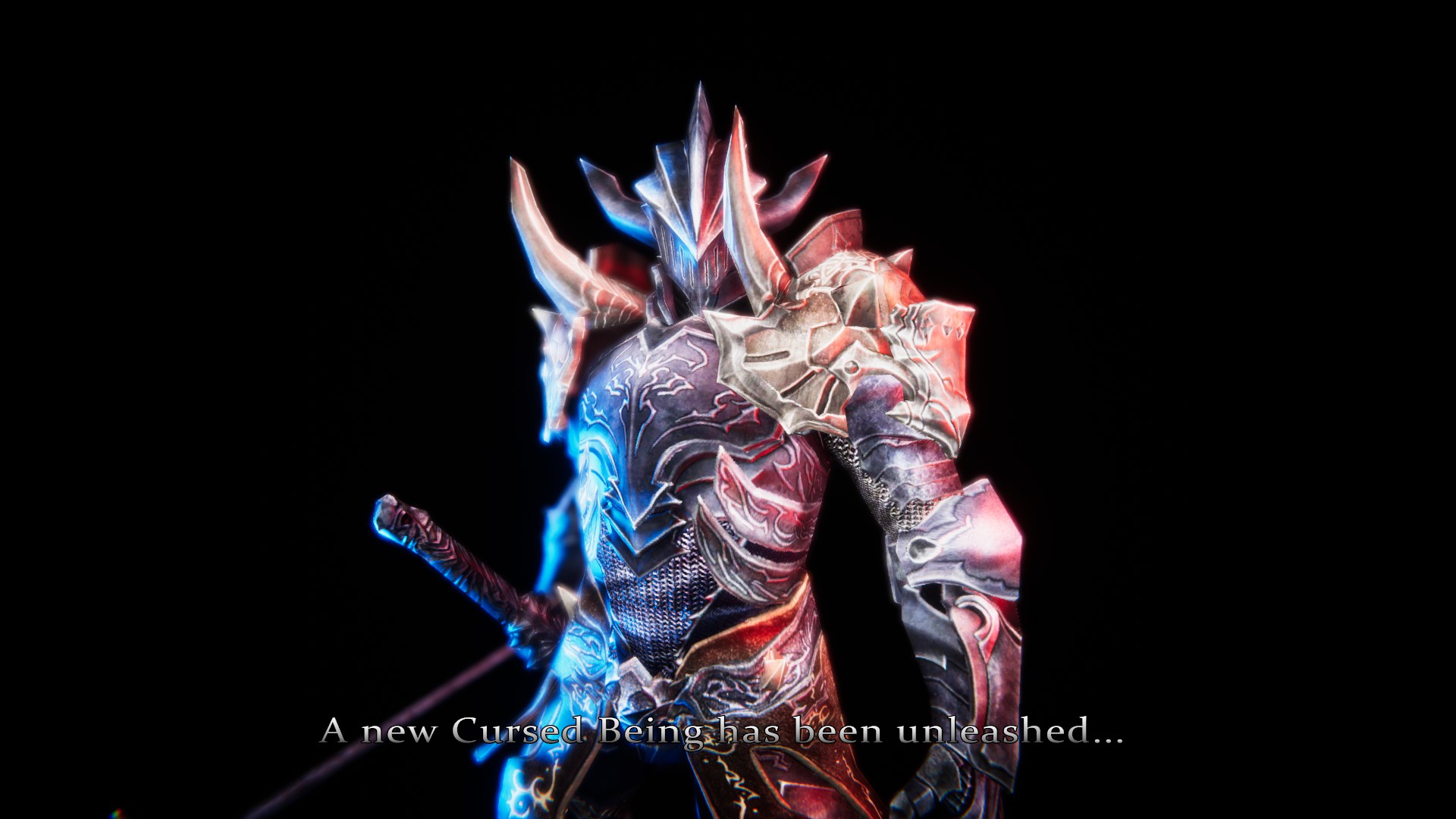
Every level is structured the same way. You move around in a relatively small area, pick up treasures (currency, golden runes, soul orbs and artifacts) and when you run into an enemy, who will just stand around waiting for you, you’ll have to fight them. Defeat all enemies and a horseman of the apocalypse will appear and try to chase you down and you’ll either need to run to the exit or fight the horseman if you think you’re strong enough. The chase scene with the horseman is mostly for show though, as it’s the same speed as you and it will appear where you started the level, where as you’re likely going to be near the exit.
Between each level you’ll visit a pub. Here you can buy new cards, store cards you don’t want to clutter up your inventory and accept simple missions. It’s basically a glorified menu, but at least it’s pretty to look at. And once done you can start a new level. It’s also here you decide how difficult you want the levels to be, with more difficult levels giving better rewards.
Cardaclysm has its share of issues though. Preparing for the fight against a horseman means a lot of grind, you need more golden runes and soul orbs, which means playing through levels repeatedly, and you also need the right cards. A patch was recently released that lowered the cost of cards that you can buy significantly and that lowered the grind requirement a bit, but the game still manages to end up feeling quite repetitive. Some enemy creature combinations can also be unreasonably difficult or even impossible to do without far more power than you have access to when you run into them. Some kind of limit on exactly what creatures can show up together (and more importantly limits on which you can meet multiples of) would go a long way to alleviate this issue. The biggest offender was a creature that buffed itself and another random creature every time you played a card. Two of these at once was pretty much a guaranteed loss.
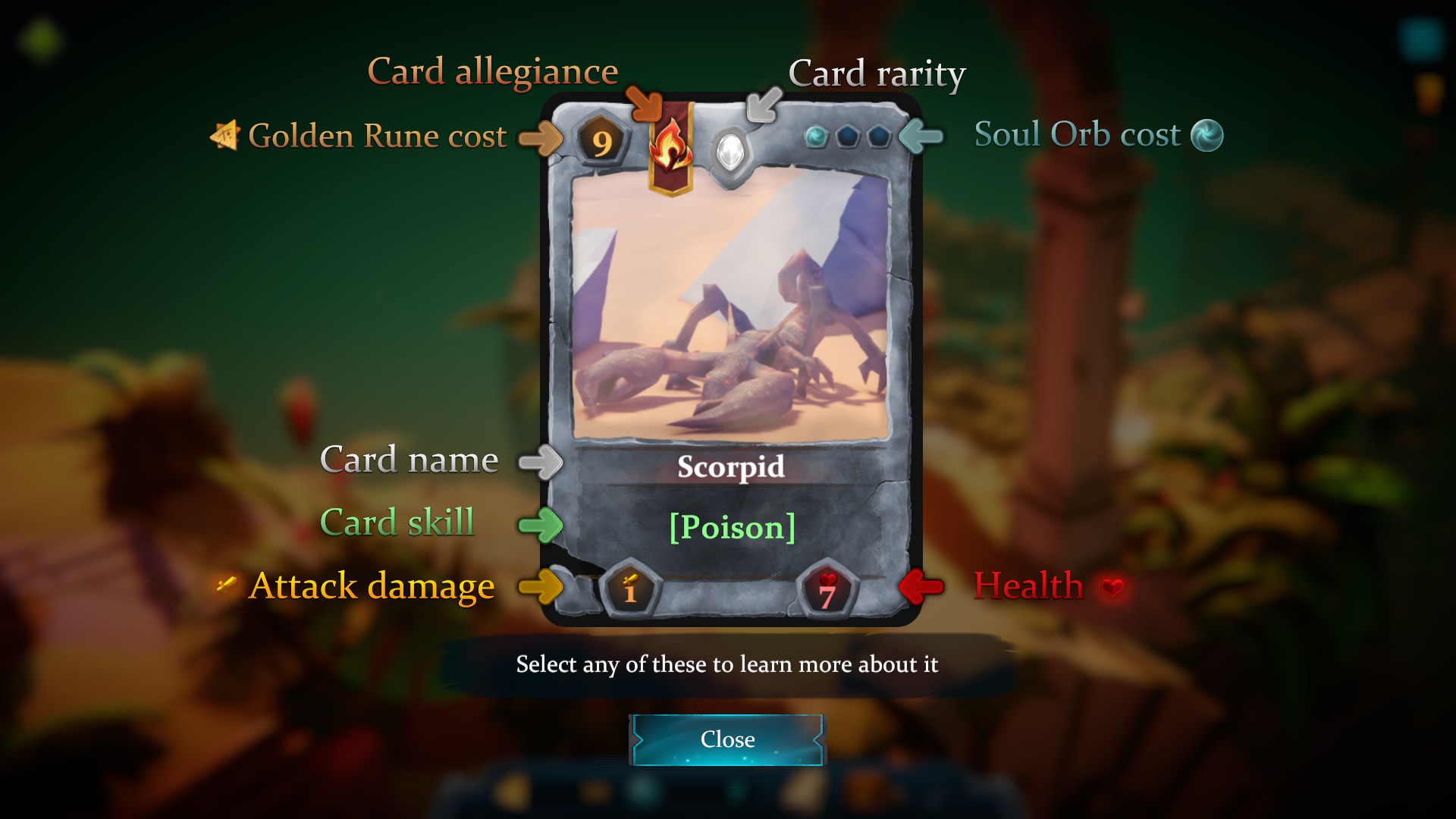
Closing Thoughts
Cardaclysm is a game that should have been better. All the pieces for a good game are in here, but they just don’t quite fit together. The end result is a game that’s not necessarily bad, but it’s still disappointing. The biggest issue is the pacing & balance of the game. Building up for a fight against the next horseman requires running through randomly generated levels repeatedly with not a whole lot to differentiate them. Sooner or later you’ll simply get a deck that’s so powerful that the regular opposition, barring any very specific combinations of enemies, will melt away with no real change in strategy, yet you’re not strong enough to take on the boss yet. And once you beat a boss it all starts over again. And the way card costs are handled hurts the games overall depth. Many cards are only really useful when you have a certain amount of golden runes, and drop off later.
If you’re the kind of person who can find grind almost meditative, who does not mind replaying the same bit of content over and over then Cardaclysm might still be for you. But for most people it’s probably worth waiting to see if it gets another re-balanced patch or two. The developer has already released one patch that cut down on the grind and seems to be listening to feedback, so this game might turn out great. But at the moment it’s not worth full price.










